Few names have such charisma in the world of watches as Omega. Since its founding in 1848, the long-established Swiss manufacturer has been pushing the boundaries of watchmaking with avant-garde achievements, cutting-edge technologies and innovative design. Whether on NASA lunar missions, on the wrist of James Bond, or at the finish line of the world’s biggest sporting events, Omega watches have always been in the thick of the action.
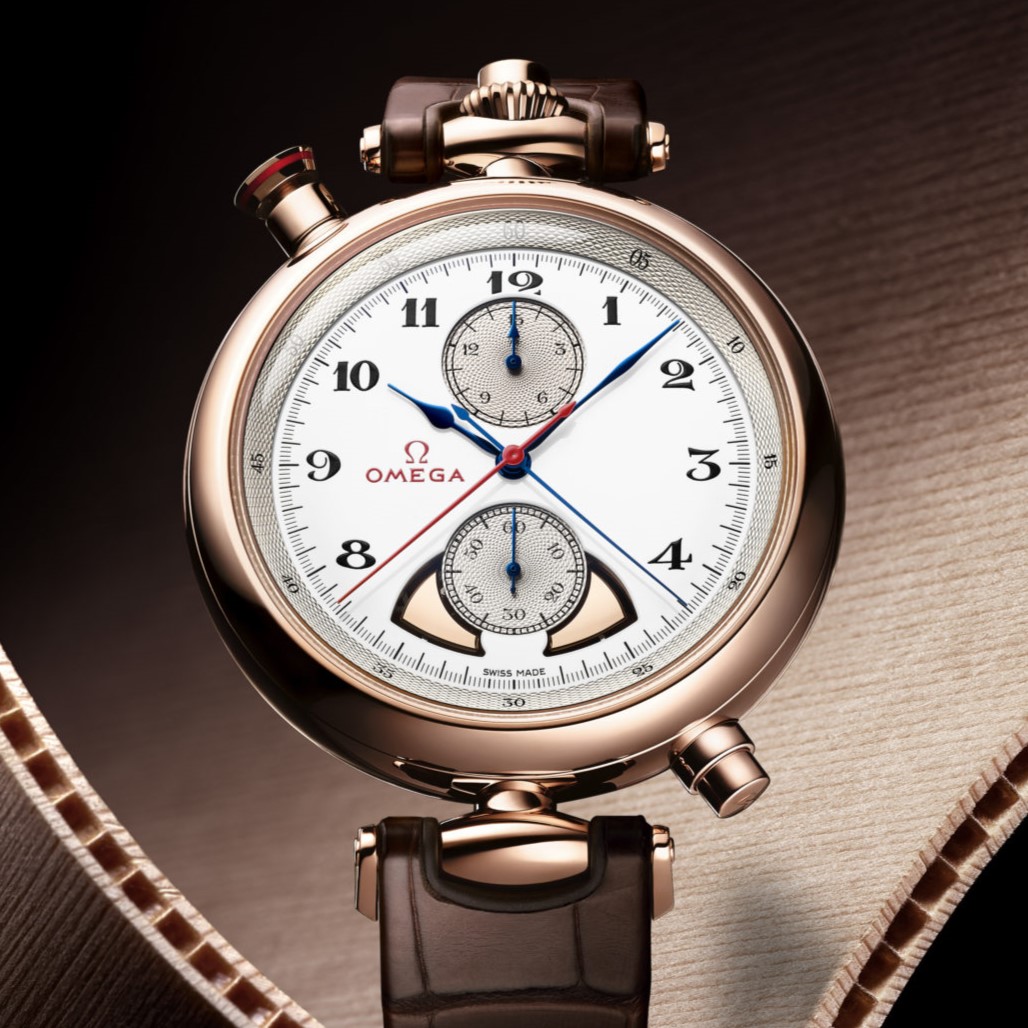
That’s why the announcement of two new chronographs actually comes as no surprise. However, they are so spectacular that even seasoned Omega fans and Speedmaster enthusiasts will probably be stunned. Both the Olympic 1932 Chrono Chime and the Speedmaster Chrono Chime are beating to the rhythm of the new Co-Axial Master Chronometer Caliber 1932, a joint development with Blancpain that had been in the making over the course of six years and brings together two milestones of Omega’s history, the invention of the minute repeater in 1892 and the pocket chronographs used to time the Los Angeles 1932 Olympic Games, which marked the company’s debut as Official Timekeeper.
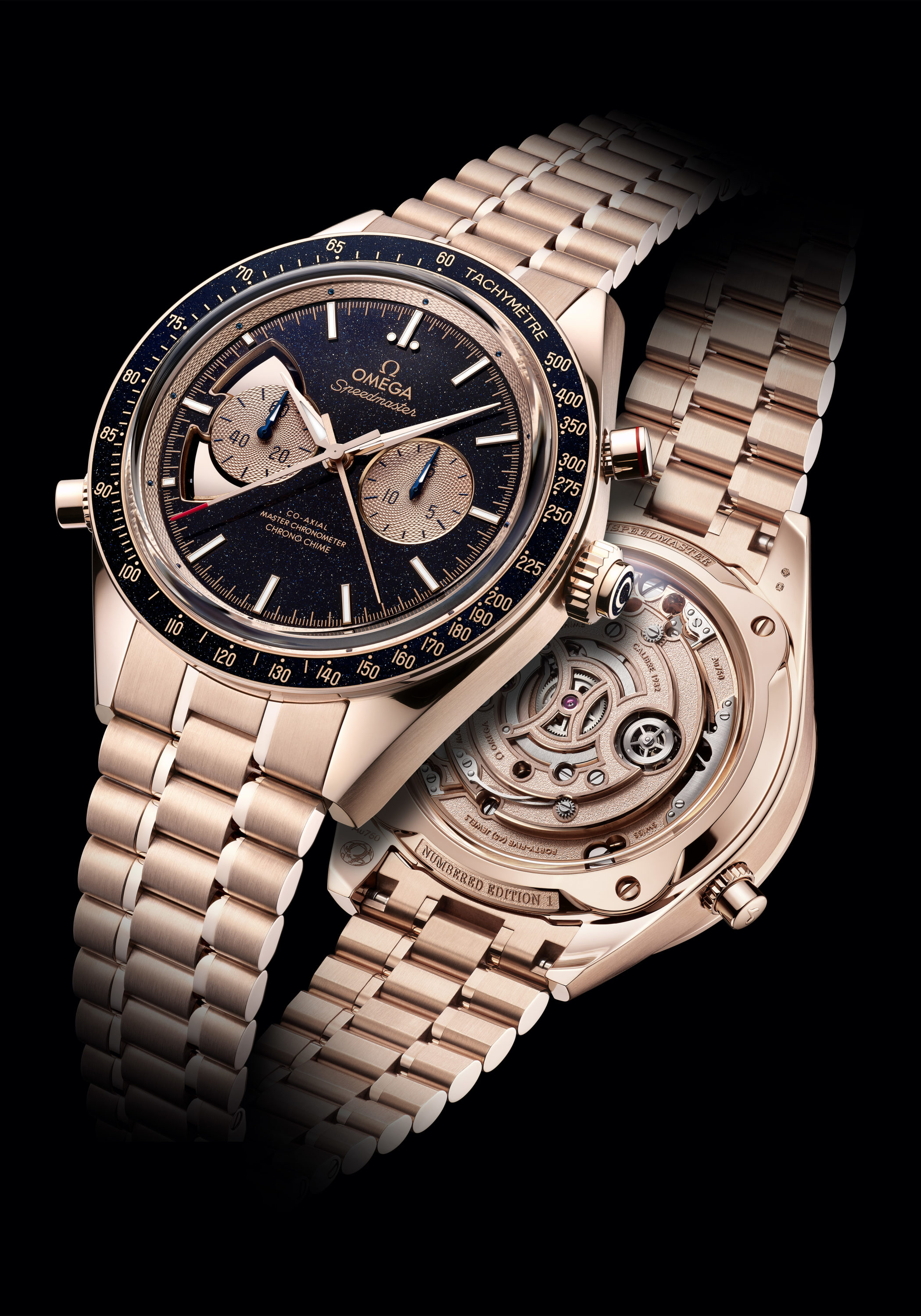
We are speaking of nothing less than a fully integrated split-seconds chronograph that is able to measure the 1/10th of a second and a minute repeater that incorporates a world’s first: the chiming of the elapsed times. Fully integrated needs to be highlighted because it means that both highly ambitious complications are fused together in one movement. In fact, it is the technically most advanced caliber Omega has ever made.
However, there is much more to it, which explains why it took 6 years of development. Before they could even begin, the watchmakers had to find a way to expand the existing boundaries of the brand’s famous Co-Axial escapement. This groundbreaking design, developed by the late brilliant watchmaker Georges Daniels, is an essential component in all of Omega’s movements.
Designed to operate at a relatively standard frequency (between 3 and 4 Hz), it presented a major constraint when developing the new movement, which needs to beat at 5 Hz to display 1/10th of a second, like the pocket chronographs used to time the Los Angeles 1932 Olympic Games. It didn’t stop there. The watchmakers also had to add three chime cams to the already complicated chronograph mechanism, include two security functions to prevent malfunction, and integrate a split-seconds function. What’s more, to achieve Master Chronometer status, the Caliber 1932 has to withstand external magnetic fields of 15,000 gauss, requiring the use of 50 non-ferrous components. It bears 17 patents and, in addition to being a technological marvel, it is a satin-brushed and mirror polished feast for the eyes.
OLYMPIC 1932 CHRONO CHIME
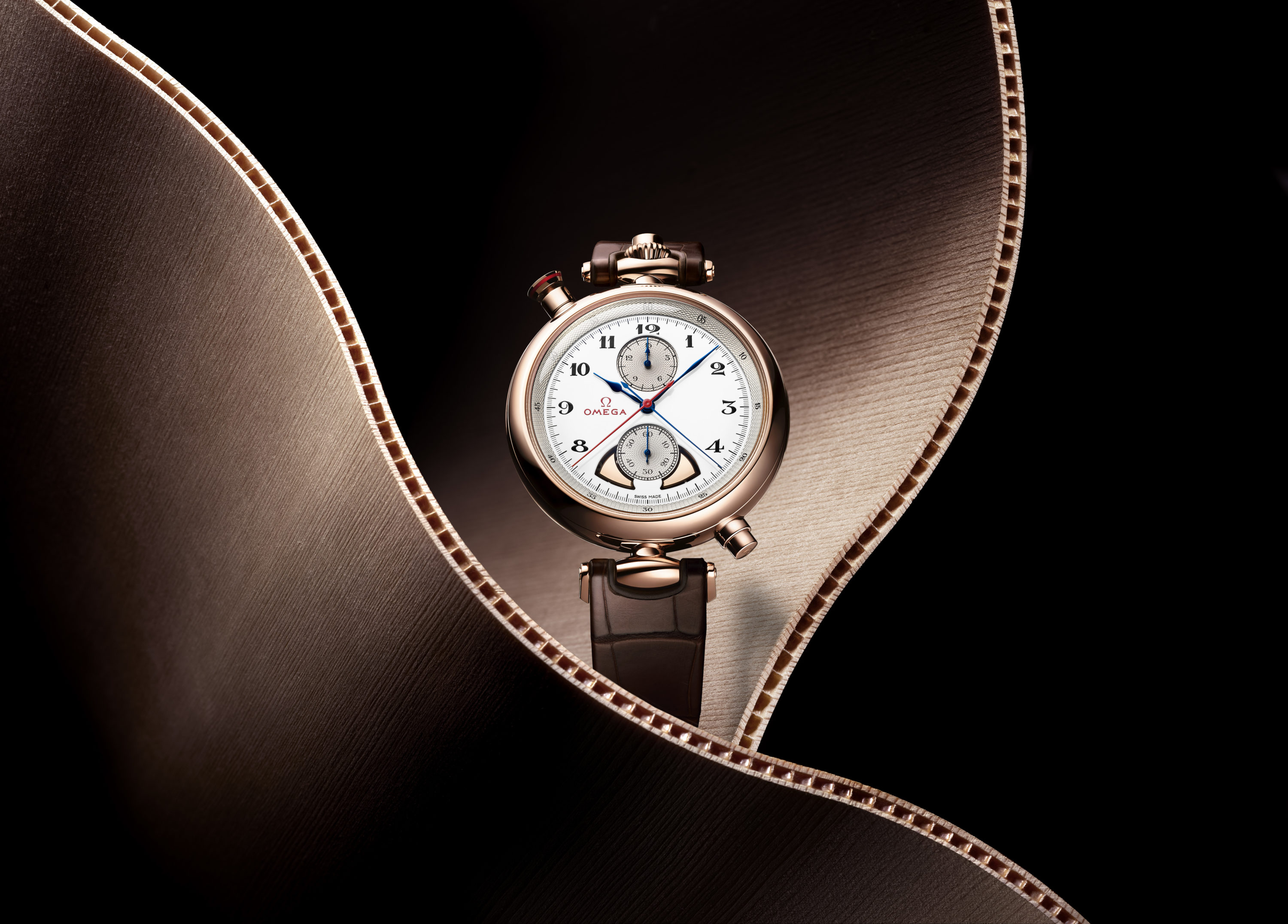
The Olympic 1932 Chrono Chime comes in Omega’s proprietary Sedna Gold case which has a diameter of 45mm. It frames a vintage-style grand-feu enamel dial with a 925 silver guilloché inner bezel and subdials in Omega’s “exclusive acoustic waves” pattern, which aims to visually reflect the sound waves produced by the watch’s chimes.
The dial’s variety of blued hands in Sedna Gold includes a red-varnished split seconds hand for easy readability. The chime pusher at 5 o’clock sports an embossed musical note, while the split-seconds pusher at 11 o’clock has a red hybrid ceramic ring that echoes the look of the split seconds’ hand.
Two hammers which are fitted with an insert of hardened steel, hit on the hand-tuned gongs crafted from Sedna gold. Fixed to the case body, they produce a crystal clear and strong sound.

Beautifully engraved on the caseback are the words “Official Timekeeper Olympic Games, Co-Axial Master Chronometer” and the watch’s number. Retail price is marked at CHF 420,000 (ex. VAT), or about $424,000 USD.
SPEEDMASTER CHRONO CHIME
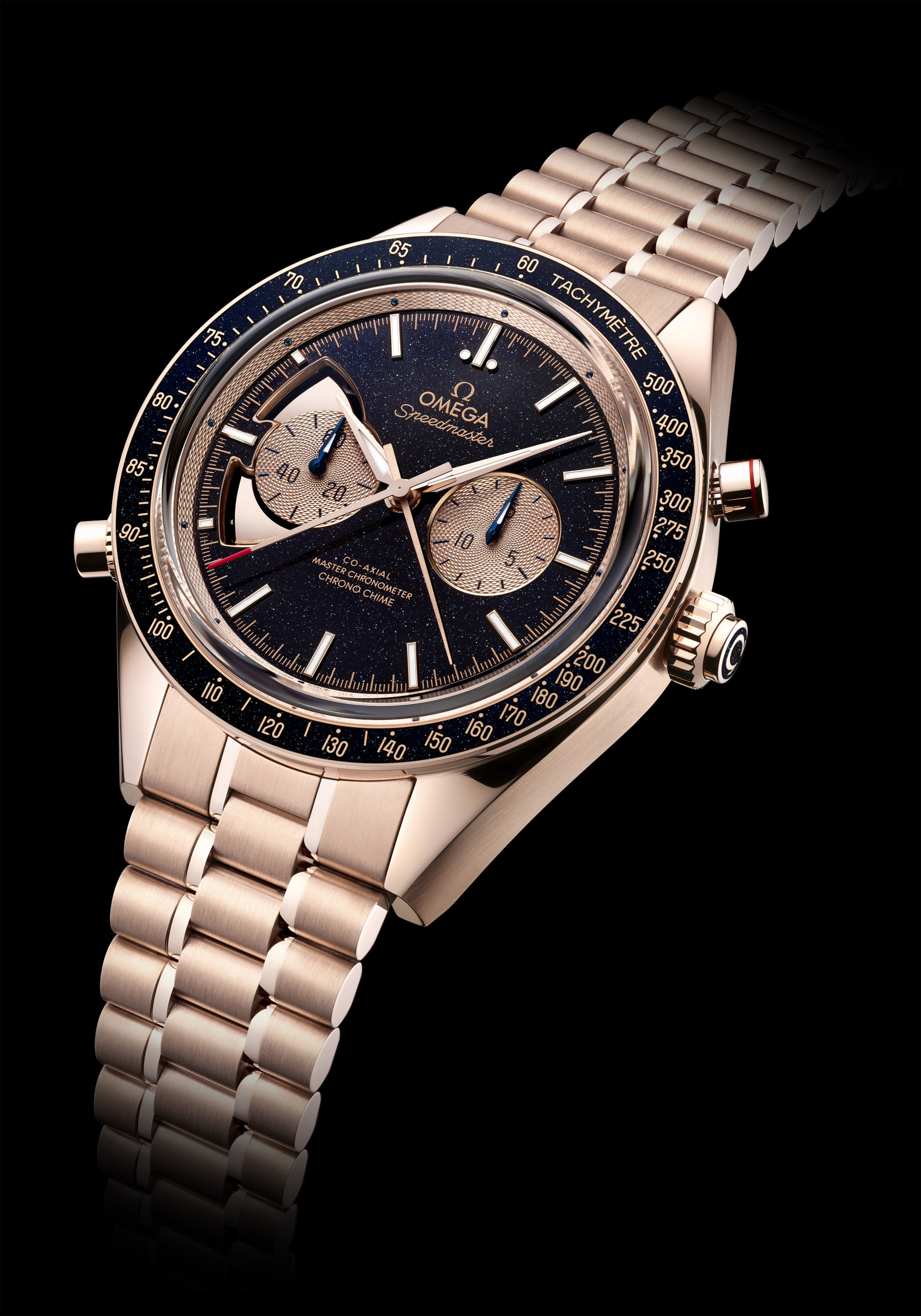
The Speedmaster Chrono Chime has a diameter of 45.5mm and is presented in a Sedna gold case inspired by the 2nd generation of the legendary Speedmaster, the CK 2998, which was the first watch worn in space. It features a stunning blue aventurine grand-Feu enamel dial with an inner bezel and subdials crafted from Sedna Gold and adorned by the aforementioned acoustic wave pattern. The hour markers and hour/minutes hands are likewise made from Sedna Gold while the subdial hands are blued. Here, the double hammers are placed at 9 o’clock.
Pricing is marked at CHF 450,000 (ex. VAT), or about $454,684 USD at time of writing.
To learn more, visit Omega, here.
And to listen to the magnificent chime, press here.

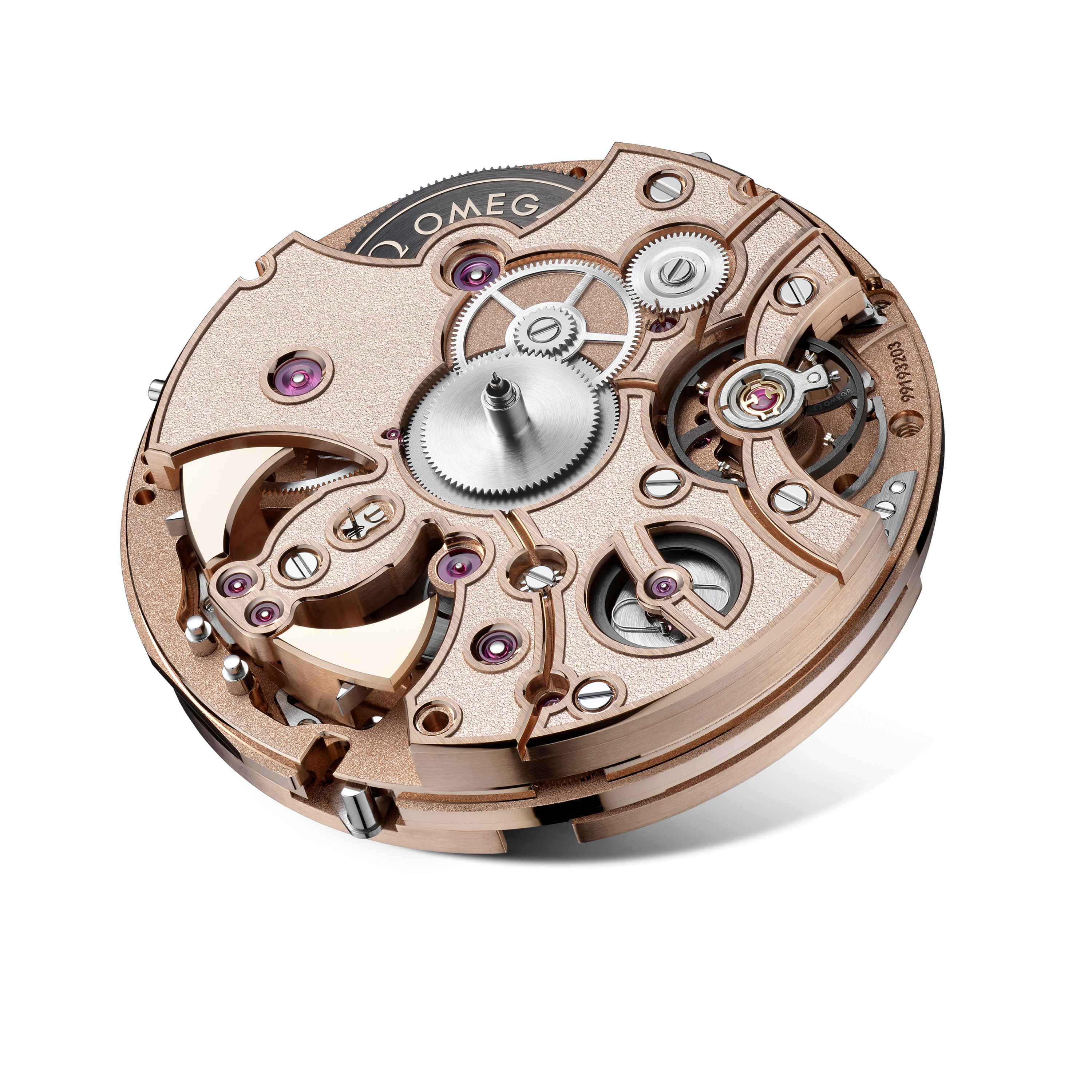
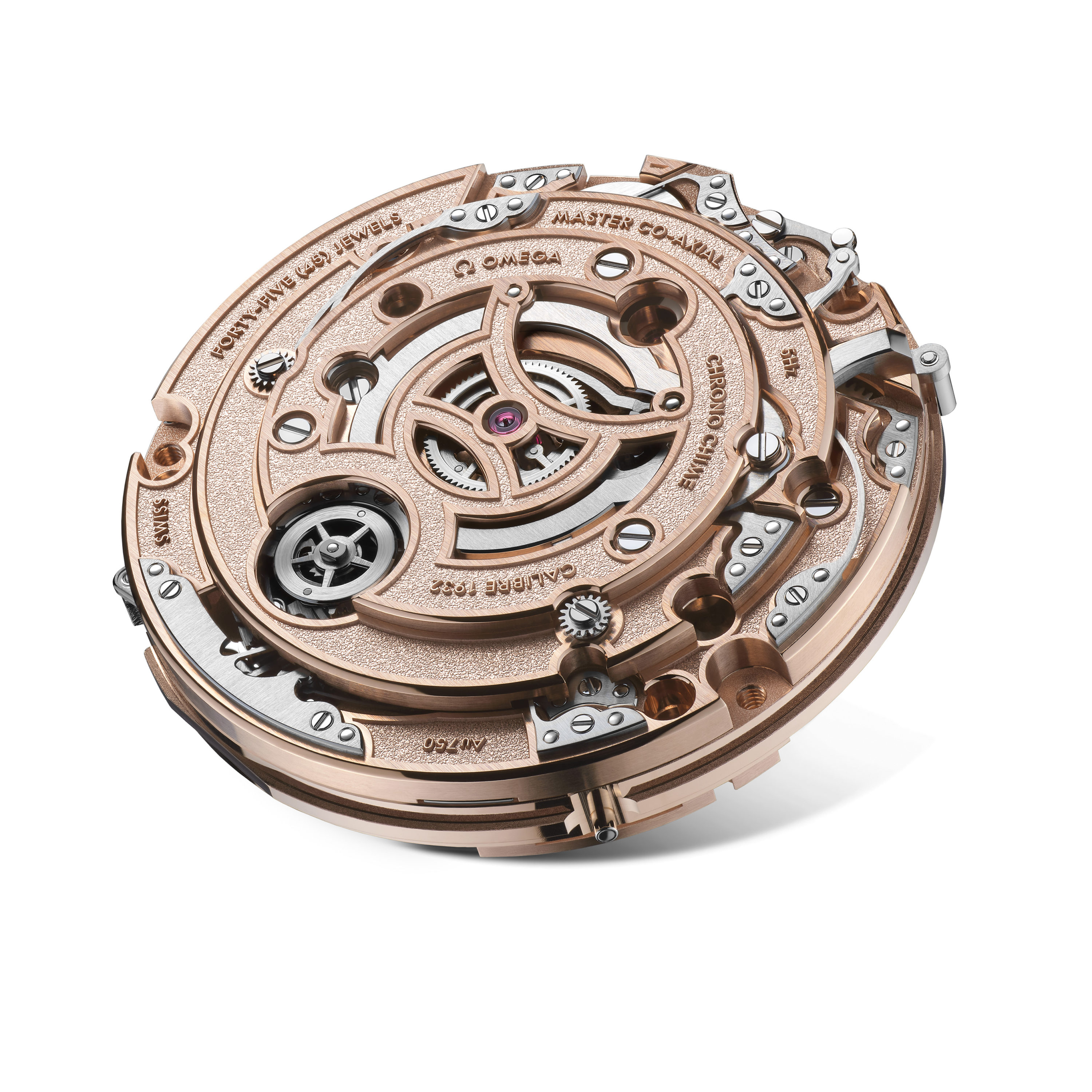





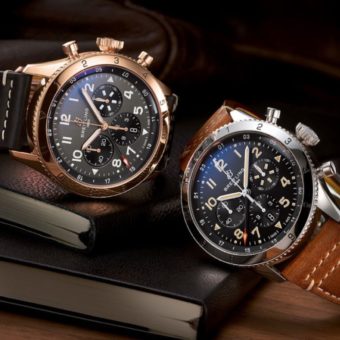
Omegas for $450K US in prescious metals ? The brand cannot sell it’s steel models at list price and they don’t hold very well on the second hand market so don’t know what Omega is trying to prove here ?
If you have the money buy a Patek for that kind of money…
WHAT AN ACCOMPLISHMENT
no wonder they took 6 years planning, chiming on elapsed time !!!!!
imagine having that stunner of a watch at a cocktail party, making it chime everytime you want another negroni, jajajjajajaj
omegas technical prowess keeps getting better and more elegant, cementing the brands forward thinking deep into everyones mind